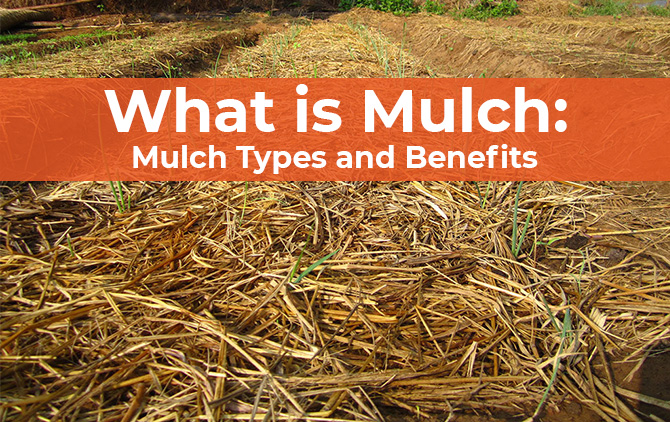What is Mulch: Mulch Types and Benefits

12 Aug, 2021
What is Mulch: Mulch Types and Benefits
Mulching is a technique that has great benefits on the cultivated land and improves the harvest results. In addition, it can be used with almost any type of crop. There are several types of mulch, but one of the most effective is mulch. But do you know what padding is? And what is mulch?
What is mulch?
Before looking at mulch, we must know what mulch is in agriculture. As a generic concept, an agricultural technique aims to protect the cultivated soil and raise its temperature. In this way, the growth and development of the seeds will be much more effective.
In mulching, this protection is done by covering the cultivated area with organic material, called mulch. Its origin can be very diverse as long as it is organic matter. For example, it can be straw, grass debris, dry or green leaves, chips, or pieces of wood, among other options.
The thickness of the mulch layer should be approximately between 5 and 10 cm, although it may vary depending on the material we use. The best time to apply mulch is in the change of season from winter to spring. Being an organic compound, over time, the mulch will gradually decompose, providing nutrients to the developing roots, improving their growth and production.
Padding types
There are several types of padding depending on the type of material we use. All of them can be included in two broad categories, organic and inorganic padding. Within them, different materials can be used. We will see the main ones.
Organic padding
This type of mulching or organic mulching can be done with different kinds of biodegradable material. It is temporary since, over time, it will decompose. Some of the most used organic materials are the following:
Pine leaves - Especially recommended for crops that leave a somewhat higher level of acidity in the soil than usual—for example, strawberries, blueberries, garlic, or potatoes.
Straw mulch - It is the most used type of mulch in organic farming.
Leaf remains - They can be used in almost any type of crop. Their main disadvantage may be that they are very susceptible to blowing up due to strong winds, so it is advisable to use them in somewhat protected areas.
Compost – It consists of food scraps and organic waste. By decomposing, it will contribute a large amount of nutrients to the crop.
Wood or sawdust scraps help keep the soil very moist and cool, creating an ideal environment for the growth of seeds and roots.
Newspaper or cardboard - It comes in handy in the driest areas. It especially helps the growth of seeds.
Inorganic padding
This padding is permanent in nature, as it does not break down over time. The padding technique can be used with different types of plastic materials. There is a great variety of them, and the following main categories can be distinguished:
With perforations - It is ideal for crops that require more moisture and perspiration. Most used in dry areas, where more water is needed.
No perforations - They are ideal for places with a higher degree of humidity.
Other materials – These are materials such as stones or rock debris. This option is not widely used in agriculture since, although it has some beneficial properties for the roots, it has a more aesthetic function.
In addition to these categories, they can be distinguished based on the color of the plastic and its degree of opacity. The white colors are placed towards the outside and favor the absorption of light, which helps the plants to carry out photosynthesis.
Benefits of mulch in agriculture and cultivation
The main advantages of using mulch are as follows:
Protection from inclement weather - The padding layer protects the cultivated area from extreme temperatures. It is highly recommended in olive or almond tree plantations since they are the ones that suffer the most in these cases.
Great contribution of nutrients - In the case of organic matter, it ends up decomposing over time, which contributes a large amount of nutrients to the plantations, improving the quantity and quality of the harvest.
Avoid the appearance of competing plants - Reduces the chance of unwanted plants appearing on the surface. Therefore, our plantation will receive the water and nutrients it needs.
Increase the profitability of the plantation - By improving the conditions in which the plantation is developed, the quantity and quality of the harvest will be greater using the same resources. Therefore, the profitability of the plantation will be increased.
As we have seen, there are many types of mulch, but one of the best results is mulch. Thanks to its properties, our plantation will benefit greatly, as long as we use the most suitable type of mulch for our kind of crop.
